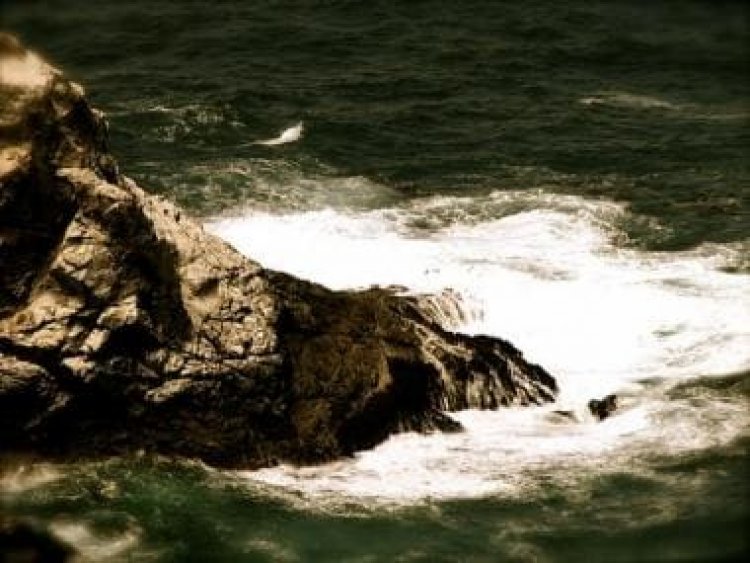Explained: Amasia, the supercontinent that will be formed as the Pacific Ocean shrinks
Explained: Amasia, the supercontinent that will be formed as the Pacific Ocean shrinks

The Pacific Ocean is shrinking and as a result, Asia will crash into the Americas leading the way for one big supercontinent called ‘Amasia’.
According to new research conducted at Australia’s New Curtin University, scientists used a supercomputer to determine how the world will look once the supercontinent is formed.
Their calculations revealed that Amasia will be a combination of present-day American and Asian continents which will be formed 200 to 300 million years from now.
Let’s take a closer look at the details of the new supercontinent.
What is a supercontinent?
A supercontinent is one large landmass that is formed as a result of the convergence of several other existing continents.
The concept was first proposed by a scientist called Alfred Wegner, who tried to explain the idea behind supercontinents in 1912. According to a report by WorldAtlas, he included the concept in his theory of continental motion.
Through his study, which was backed by new and old evidence, he tried to suggest that all the continents of Earth had once been part of a single body. He initially termed it as “Urkontinent”.
With the help of his theory, modern-day scientists are now able to study plate tectonics.
Scientists suggest that in the past, at least seven supercontinents were known to be present on Earth.
A supercontinent cycle occurs every 600 million years and during this process, it brings all continents of the world together.
According to Science Direct, supercontinents are formed by two processes, namely extroversion and introversion. During extroversion, the oceanic lithosphere surrounding the supercontinent is subducted – a geological process where a tectonic plate converges with a less dense lithosphere of a second plate.
On the other hand, introversion begins when subduction zones are initiated along boundaries between the interior and exterior oceans.
What will Amasia be like?
Lead author Chuan Huang said that by simulating the Earth’s tectonic plates using a supercomputer the team was able to show that in less than 300 million years’ time the shrinking of the Pacific Ocean will make way for the formation of Amasia.
“The resulting new supercontinent has already been named Amasia because some believe that the Pacific Ocean will close (as opposed to the Atlantic and Indian oceans) when America collides with Asia. Australia is also expected to play a role in this important Earth event, first colliding with Asia and then connecting America and Asia once the Pacific Ocean closes,” he added.
Amasia would form on the top of the Earth and would eventually slump south toward the equator. If this happens, Antarctica might remain isolated at the bottom of the world.
The researchers have predicted that with the formation of Amasia, the planet can be expected to be drastically different from what it is now.
According to a report by Interesting Engineering, water levels in the seas will dip and the interiors of the supercontinent are expected to turn into arid regions. Apart from this, daily temperatures are also expected to have high ranges.
What are some other supercontinents?
According to a report by Independent, the oldest supercontinent called Columbia (Nuna), came together about 1.8 billion years ago.
After Nuna broke apart, Rodinia formed about one billion years ago.
The most recently found supercontinent is Pangaea, which came together about 300 million years ago.
According to a report by LiveScience, Columbia (Nuna) broke apart to form Rodinia through the process of inversion.
While Pangaea broke apart to become the continents we are living on today.
Why is the Pacific Ocean shrinking?
The Pacific Ocean hosts a circle of subduction zones called the ‘Ring of Fire’, which is a 24,900-mile-long path along the ocean’s edge, according to a report by World Atlas.
The ocean is also home to about 75 per cent of the world’s volcanoes and 95 per cent of all earthquakes happen there.
The Pacific’s mid-ocean ridge is a fast-spreading centre that spreads about three to six inches a year. However, the growth of the Pacific Ocean is slowed down due to the destruction of old crusts which is hindering the formation of new seafloor.
Apart from this, the Atlantic Ocean is currently expanding and the expansion of another ocean is also causing Pacific to shrink.
With inputs from agencies.
Read all the Latest News, Trending News, Cricket News, Bollywood News,
India News and Entertainment News here. Follow us on Facebook, Twitter and Instagram.
What's Your Reaction?


























































